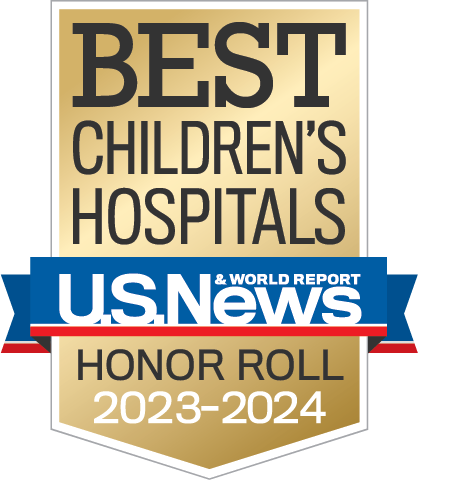Overuse Injuries | Symptoms & Causes
What causes overuse injuries?
Muscles and tendons adapt to stress, that’s how they become stronger. But they also need to rest and rebuild between episodes of stress. Overuse injuries develop when a muscle, tendon, ligament, or bone is repeatedly stressed and never gets a chance to rest.
Several factors can increase a child’s risk of an overuse injury:
- Growing bones: The long bones in children’s arms, legs, hands, and feet have soft areas of cartilage (growth plates) near the ends of the bones where growth occurs. Because growth plates are softer than the rest of the bone, they are more prone to injury from repetitive stress. Little League shoulder and Little League elbow, for instance, are growth plate injuries that occur from too much throwing without rest.
- Growth spurts: During growth spurts, your child’s bones are lengthening and the tissues around them become tight. This makes them more prone to injuries.
- Prior injury: A prior injury can predispose the area to injury through overuse.
- Lack of conditioning: Jumping right into a demanding training regimen without building up the necessary strength and endurance increases an athlete’s risk of overuse injury.

Sports injuries: Why ignoring pain is bad for athletes
While an athlete’s legs or lungs might burn as they go all out in practice, that type of discomfort fades quickly. Pain that continues when the athlete is at rest is a sign that something is wrong.
What are the symptoms of an overuse injury?
Pain and inflammation can be symptoms of an overuse injury. The pain from overuse injuries tends to intensify in stages:
- At first, the injury may hurt mildly during training or competition.
- As the injury progresses, pain becomes constant whenever your child is playing their sport.
- Finally, if left untreated, damage becomes significant and pain becomes constant even when your child is not playing the sport.
Can overuse injuries be prevented?
Parents and coaches have a great deal of influence over how athletes train. Encouraging moderation in training and being careful about how hard you push your young athletes can reduce the risk of sports injuries.
Coaches should learn and use proper training techniques and avoid too many repetitive drills. It’s also important to teach proper motion techniques for activities such as throwing or running.
Physical education departments should make sure that the surfaces of a playground, track, or field are in good shape, and that proper equipment, footwear, and protective gear are used for each sport.
Make sure athletes:
- Warm up and stretch before every practice.
- Rest at least one day a week.
- Play a variety of sports. Children and teens who specialize in just one sport are at much higher risk of overuse injuries. Playing different sports is generally more fun and gives your child’s body the chance to develop in a more well-rounded way.
- Train in an age-appropriate way. In most cases, kids younger than fifth grade should play sports for no more than two seasons a year.
- Alternating exercises during practice. For instance, in tennis, don’t do 100 forehand swings followed by 100 backhand swings. Alternate between forehand to backhand. Not only are you less likely to become injured, over the long term, muscle memory actually improves if you vary the drills.
Overuse Injuries | Diagnosis & Treatments
How are overuse injuries diagnosed?
To diagnose an overuse injury, your child’s doctor will take a medical history and gather information such as how often your child trains and at what level of intensity. During a physical exam, the doctor will move your child’s joint around to pinpoint when and where it feels uncomfortable.
The doctor may order x-rays to determine if your child has a fracture. Because stress fractures and growth plate damage are often not visible on x-rays, they may also order an MRI (magnetic resonance imaging). The more detailed images provided by MRI could help confirm the diagnosis.
How are overuse injuries treated?
Your child’s treatment will depend on the type of injury. Treatment usually starts with R.I.C.E. (rest, ice, compression, and elevation), and sometimes medication to help control pain and swelling.
Rest is the most important thing an athlete can do for an overuse injury. This means restricting all activities that use the injured area for a period of weeks or months — your child’s doctor will recommend a time frame. Depending on the injury, they may also recommend a splint, cast, or boot to protect the injured area as it heals.
For a severe injury, treatment may include:
- temporary crutches or a wheelchair
- physical therapy to stretch and strengthen the injured muscles, ligaments, and tendons
- surgery if the injury is recurring, your child is in constant pain, or if a muscle, tendon, or ligament is badly torn
Nonsurgical innovations in treating tendon and ligament injuries
Boston Children’s Sports Ultrasound Clinic offers regenerative medicine, a minimally invasive approach to treating sports injuries that stimulates the body’s natural healing processes.
- Shockwave therapy uses shockwaves to stimulate the release of growth factors into injured tissues. The treatment can relieve pain and promote healing of injured tendons, ligaments, and other soft tissues.
- Platelet-rich plasma (PRP) injections can also stimulate tissue regrowth and healing. Platelets are cells that occur naturally in the blood and promote healing. PRP injections involve isolating platelets in a sample of a patient’s blood and injecting those platelets into the affected area.
How we care for overuse injuries
As the largest and most experienced pediatric and young adult sports medicine practice in the country, the Sports Medicine Division at Boston Children's combines personalized care with innovative treatment for each athlete we treat.
Our Sports Medicine team consists of sports medicine physicians, orthopedic surgeons, physical therapists, podiatrists, athletic trainers, sports psychologists, dietitians, and many others who collaborate in every aspect of our patients’ care and their recovery.
The Micheli Center for Sports Injury Prevention, part of the Sports Medicine Division, is dedicated to the prevention of sports injuries. Through research and clinical training, we offer practical strategies that help young athletes reduce their risk of injury while enhancing their sports performance. Our rehabilitation and strength training programs help injured athletes return to play stronger and healthier.
Whether injury prevention or recovery is your goal, we have the skills and dedication to help your child remain active in the sports they love.


